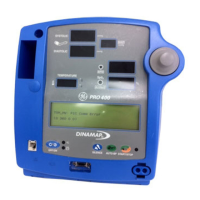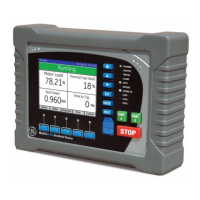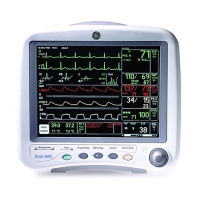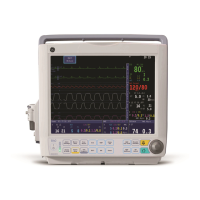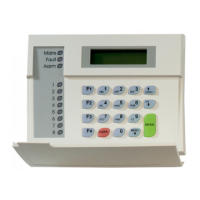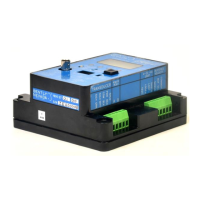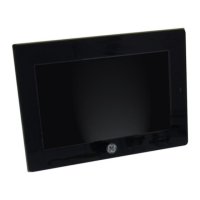10-4 Dash™ 3000/4000/5000 2000966-386D
Monitoring NBP
During irregular rhythms, only pulses from the current determination are used in
calculating the blood pressure values. In order to ensure adequate artifact rejection
capability and optimal SuperSTAT NBP performance, several criteria used to match
and qualify the oscillometric pulses at each pressure step are relaxed while
supplementing the criteria with additional information from ECG.
NOTE
(Adult/Pediatric only) When ECG is monitored, SuperSTAT NBP is able to
determine blood pressure in the presence of irregular heart rhythms. At the
beginning of a SuperSTAT NBP determination, the coefficient of variation from
the previous 120 ECG R-R intervals is used to determine if an irregular rhythm is
present.
Additional Information
The GE “Critical Care Monitoring Clinical Reference and Troubleshooting Guide”
provides the following information:
Oscillometric versus auscultation measurement methods.
Patient preparation.
NBP monitoring features.
Clinical-level troubleshooting.
Safety
The following safety statements apply when monitoring NBP.
WARNING
—The NBP parameter will not measure blood pressure effectively
on patients who are experiencing seizures or tremors.
WARNING
—Devices that exert pressure on tissue have been associated with
purpura, skin avulsion, compartmental syndrome, ischemia, and/or
neuropathy. To minimize these potential problems, especially when
monitoring at frequent intervals or over extended periods of time,
make sure the cuff is applied appropriately and examine the cuff site
and the limb distal to the cuff regularly for signs of impeded blood
flow.
WARNING
—The system is designed for use with dual-hose cuffs and tubing.
The use of single-hose cuffs with dual-hose tubing can result in
unreliable and inaccurate NBP data.
